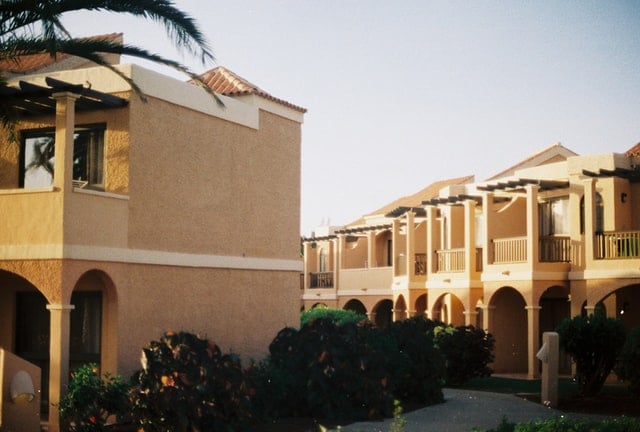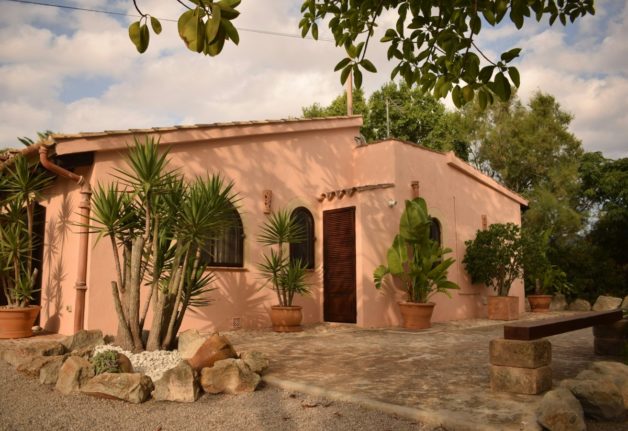Favourable new mortgage laws for all
In the past, Spain’s mortgage laws tended to side with the banks and were often punitive to borrowers.
But in 2019 the country rolled out new “hipoteca” (mortgage) laws with favourable conditions for nationals and foreigners (resident and non-resident).
These include longer default periods before repossession, more mortgage fees to be paid by the banks and the green light for borrowers to convert foreign currency denominated mortgages into euros.
FIND OUT MORE: How Spain’s new mortgage laws could affect homeowners
Non-residents pay more than residents
Non-residents will pay higher interest rates than foreign residents in Spain, “around 2.5 percent for 20 years” according to Ricardo Gulias, director of Spanish mortgage consultancy firm Tu Solución Hipotecaria, and a variable rate of 3 percent added to the Euribor index.
The reasoning for this is that non-residents are buying a second home and don’t offer added guarantees such as life insurance or a salary paid into that mortgage-lending Spanish bank.
Banks are also more likely to offer only a fixed type of mortgage to non-residents.
Non-residents get less financing
If you spend less than 183 days in Spain you are less likely to get financing for a Spanish mortgage and will have to put a bigger amount down initially.
Whereas residents will usually be lent around 70 to 80 percent of the total property amount to be paid and get better interest rates, non-residents can only expect a Spanish bank to cover 60 percent of the cost.
Again, this is due to the fact that if Spanish Banks pursue assets in the event of a default, the only thing they could have access to would be the property in Spain.
Credit rating required for non-residents
As an extra guarantee, the bank is likely to ask you for a credit rating statement from your bank in your country of origin.
Experian in the United Kingdom and Transunion in the United States are two companies that provide these services.

Fuerteventura in the Canary Islands is a popular place for foreigners to buy property in Spain. Photo: Niklas Schoenberger
Longer repayment periods for residents
Unfortunately for non-residents, Spanish banks are far more likely to only give mortgages that are no longer than 20 years, whereas for residents it’s up to 40 years, so their monthly payments are likely to be considerably higher.
Higher taxes when selling for non-residents
Here’s another important factor to keep in mind when calculating how much money you will need to borrow.
When you buy a property in Spain, you need to take into account that the property transaction cost will be 10-12 percent of the property value (it was up to 15 percent prior to 2019).
This applies to Spanish nationals and foreigners, whether they’re residents or not.
When it comes to selling a property, non-resident sellers have to factor in the Non-Resident Income Tax (IRNR) and the Tax on the Increase in the Value of Land of Urban Nature (IIVTNU or municipal capital gain tax).
This 3 percent IRNR retention on the selling price goes directly to the Spanish Tax Office whereas municipal taxes are usually decided on a more local level.
Nationality matters for non-residents
There are reports that when it comes to getting a mortgage from a Spanish bank as a non-resident, your home country can play a big part as to whether it’s approved.
According to IMS Mortgages, prospective buyers from the EU, the US, Australia, New Zealand, Hong Kong and Singapore can get financing for a mortgage relatively easily.
Whereas mortgage applicants from the Middle East, India, China, Russia and Africa struggle by comparison.
At first, this comes across as a discriminatory policy but according to Ricardo Gulias of Tu Solución Hipotecaria (Your Mortgage Solution) “banks have started specialising in operations with clients from north, central and eastern Europe and China”.
This suggests that if there is more demand for property in Spain from emerging economies, more bureaucratic barriers will be broken down for these nationals.
Non-residents have to translate and apostille documents
If you’re not working and living in Spain, some of the documents you’ll need to provide for your mortgage application will no doubt be in another language, and as with everything else that’s official in Spain that’s a big no-no.
Aside from having to pay a sworn translator to do this, some banks will also require you to get the Hague Apostille stamped on some of these documents as an international authentification.
However, residents do have to get documentation notarised when applying for a mortgage as well.
You will also need to get a “Número de Identificación de Extranjeros (NIE) , the Spanish identification number for foreigners, even if you are a non-resident.
Easier to shop around if you’re a resident
Some of Spain’s smaller banks won’t take the risk with non-residents, meaning that choices are more limited.
However, larger banks such as Banco Santander, BBVA and CaixaBank do offer mortgage deals to non-residents, and it’s also possible to get a mortgage for a Spanish property through an international bank such as Chase or IMS or by reaching out to a mortgage broker who specialises in foreign clients.
It’s not all bad for non-residents borrowers
Despite the fact that mortgages for non-residents are clearly not as favourable as for residents, there are still some positives for this group.
The initial costs and charges related to the mortgage contract are paid by the bank, so the mortgage costs work out cheaper.
The only two charges that can be assigned to a non-resident client are the property appraisal (avalúo de la propiedad ) and the settlement fee (tarifa de acuerdo), and some Spanish banks pay for these as well.
Non-resident borrowers who aren’t from the euro zone can also pay their mortgage in the currency of their country at the exchange rate applicable at the time, if they stipulate it in the contract.
READ MORE:



 Please whitelist us to continue reading.
Please whitelist us to continue reading.
Member comments